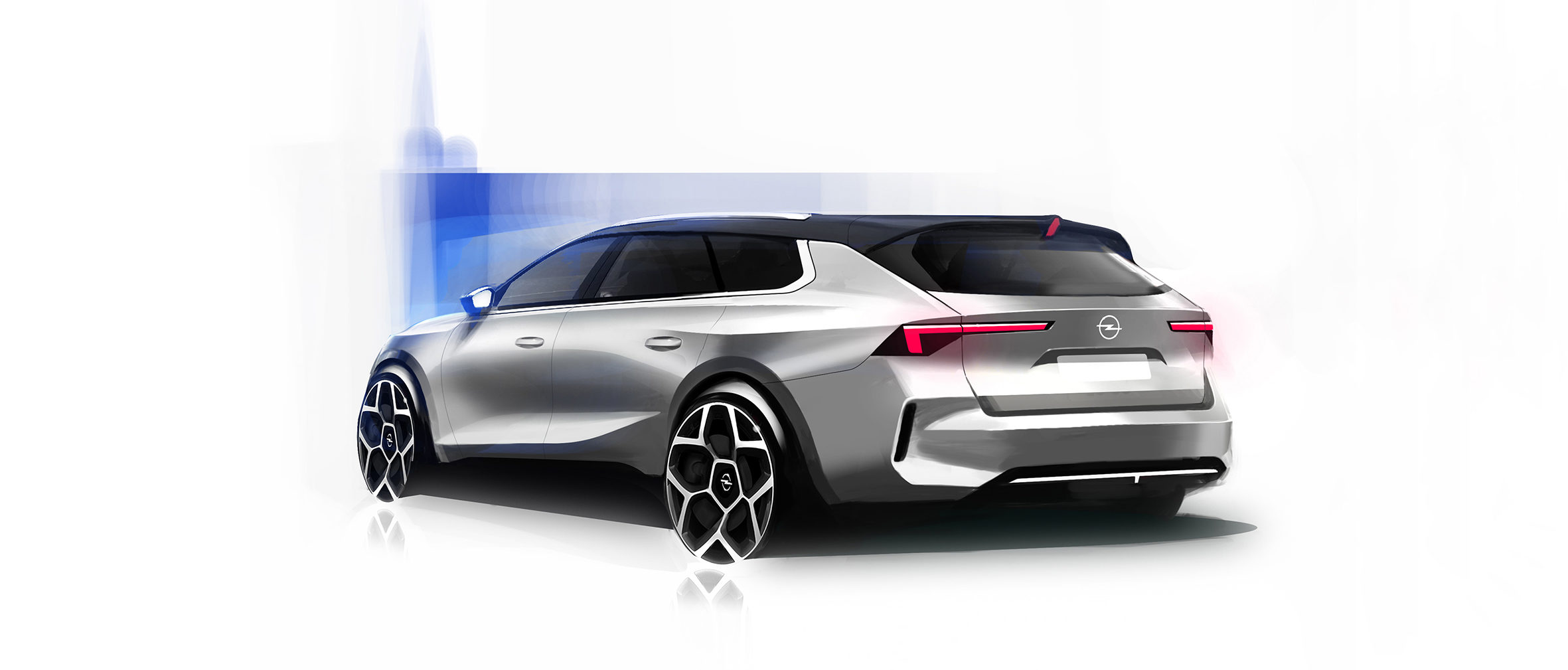Mr Arndt, “Loading master in designer outfit”, “The stylish estate” or “We like the Sports Tourer at first sight” – if you look at the press echo for the new Astra Sports Tourer, you will notice: The design is particularly well received.
Oh yes, the feedback is incredibly positive. We are very pleased that we have achieved our goal: to design a sporty estate that arouses emotions and is desirable. The positive reactions are so valuable because the Astra Sports Tourer is the first Opel/Vauxhall estate to be created based on our bold and pure design philosophy.
The design philosophy was introduced in 2018 with the GT X Experimental concept car – what role did it play during the process of creating the Astra?
A very, very important one. It’s not that we reinvented design, we could do that before. But with the philosophy we describe as “bold and pure”, we had a starting position that could not have been more focused: We want perfect proportions and clear lines, minimalism and precision. We had a clear goal in mind and a compass to guide us.
Walk us through the process: Are the designs for the estate being developed in parallel with those for the five-door version?
Yes and no, only once the first design of the five-door is frozen – we call this the “design freeze” – do we take a closer look at the estate version. The front and the front side view are identical. From the B-pillar backwards, we start with a blank sheet of paper. The creatives block out two weeks in the calendar for the so-called “Sketch Blitz”. The Execution Team around exterior chief designer Niels Loeb gets together for this. There is a briefing, then they draw. Sometimes classically with paper and pencil, but mostly with a stylus on the screen. For three or four days. Everyone for themselves. Then the team meets again and the resulting designs are reviewed.

STEFAN ARNDT
When the Berlin-born designer joined the company in 1986, he created the exterior design of the Omega B, followed in the 1990s by the original Zafira, the first seven-seater in its class. Later, Stefan Arndt was head of Advanced Design at Opel/Vauxhall, working on new platform architectures and concepts of the future. Since 2005 he has been head of interior design. He also led teams responsible for the ADAM, Meriva B, Insignia and the new Astra.
“We had a clear goal in mind and a compass to guide us.”
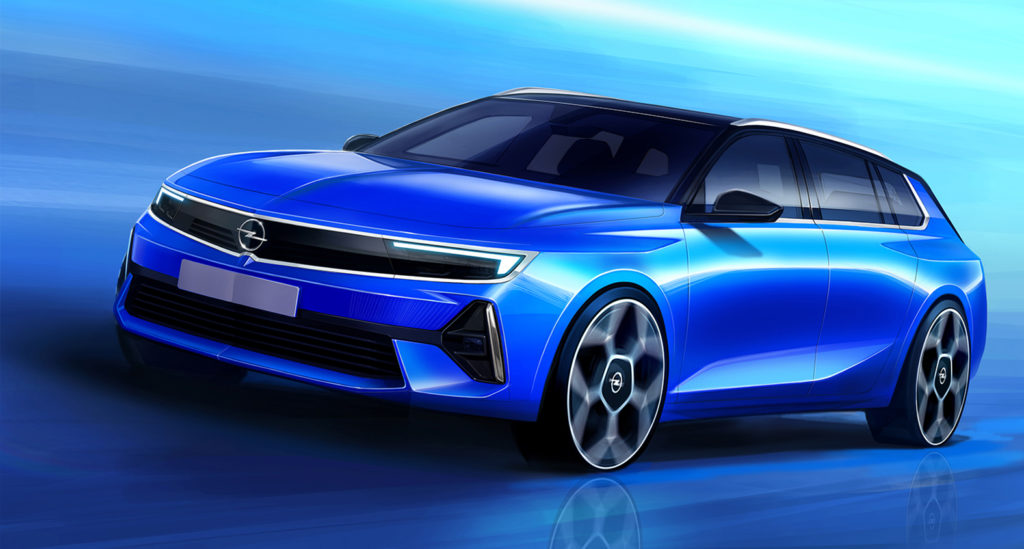
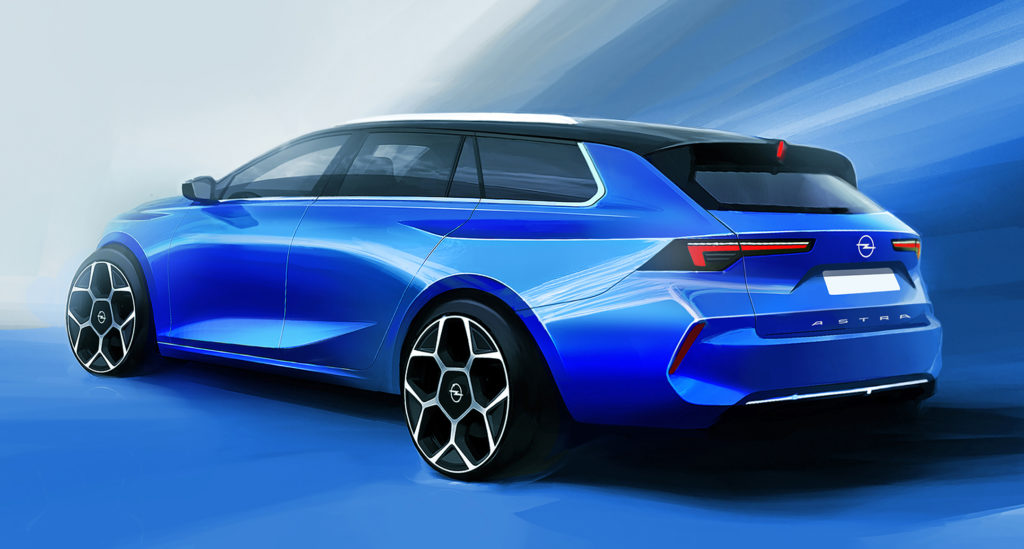
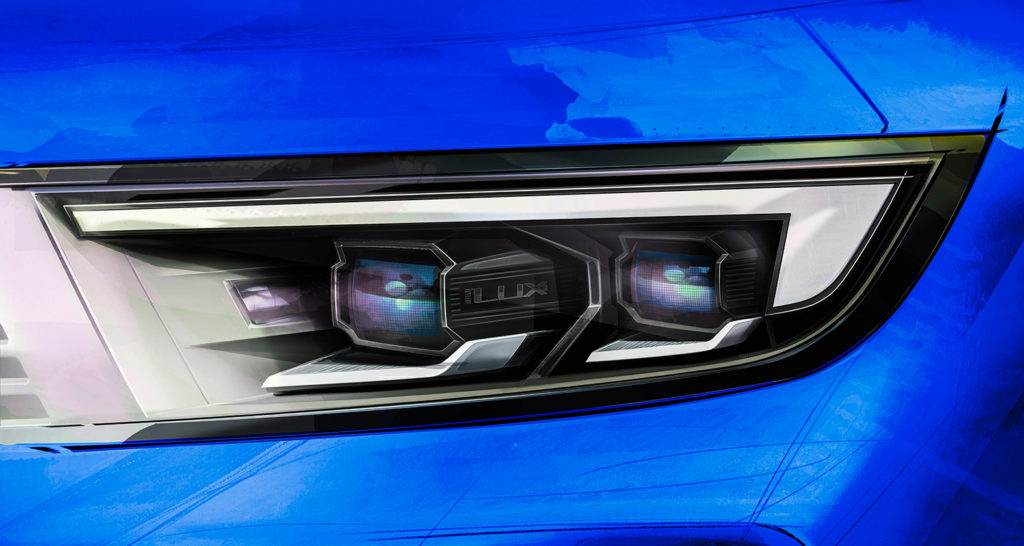
Do the designers‘ sketches compete against each other?
No. It’s not about competing, but rather about filtering out the best. Before it goes on to the next round of drawing. And the one after that. It’s always an incredibly intensive process, at the end of which, in this case, we have the clear design language of the Sports Tourer. Of course, not every detail has been finalised yet, but the result is the basis for the first 1:1 models, which we test by asking potential customers. What do they like, which lines are better received? When the decision in favour of a design has been made, that’s when my team’s hour has come.
What’s your part?
We are the industrialisation team. Our job is to get the design on the road. I love this process, it’s dynamic and results-oriented. And with the Astra Sports Tourer, we were particularly on fire. Not only do we have a long estate tradition in the company, most Astra customers – almost two out of three, after all – opt for the estate. And for these customers we wanted to create a work of art that at the same time can fully demonstrate its suitability for everyday use.
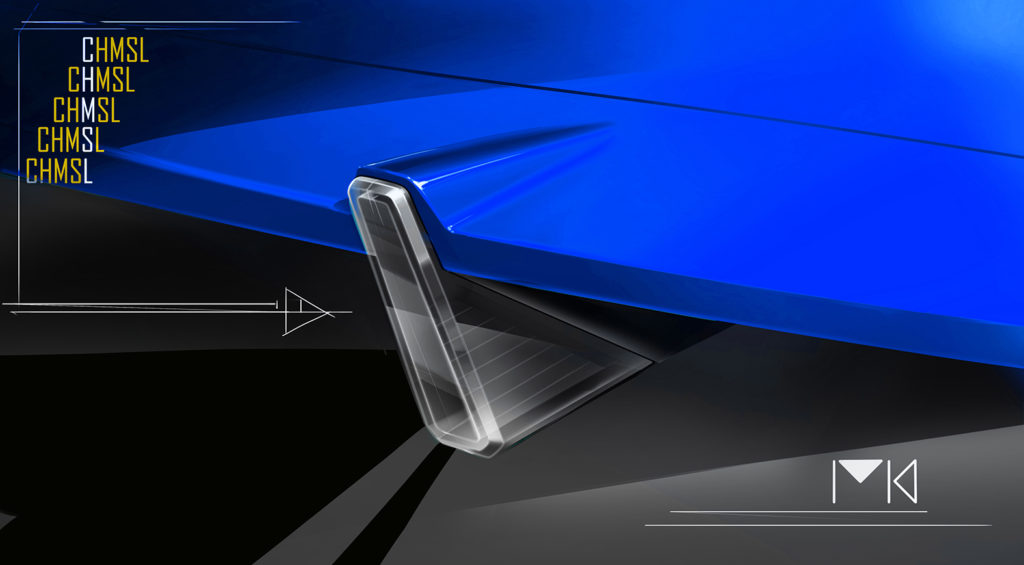
Let’s start with everyday practicality: the heart of an estate beats in the boot, doesn’t it?
Definitely. The loading space is subject to the same laws as the overall package: clear lines and precision. To keep the loading edge as low as possible, we have integrated the number plate in the tailgate instead of in the bumper – unlike the five-door model. The boot opening is so large that you can fit a washing machine inside. And the load floor is absolutely flat. There are also thoughtful details: a hook for the shopping bag, lights and a 12-volt socket as standard. The roller blind cover on the combustion models disappears into a second loading level if desired. From augmented to virtual reality – state-of-the-art digital technologies have made this efficient packaging possible. Especially as we were confronted with the restrictions imposed by the Corona pandemic during this development phase. More than once, I virtually dived into the loading area with VR goggles on my face. This looks quite funny to those standing next to me without the glasses.
And what do you think distinguishes the exterior of the Sports Tourer?
The lines are sporty and elegant. Standing with a wide stance on the road. I would always choose the optional black roof – it further emphasises the sporty, elongated look. In the side view, the forward reaching pillars at the rear reinforce the impression that the Sports Tourer is ready to pounce. And of course, the rear view of the Caravan also features the Opel compass – the horizontal lines make it stand wide on the road from this perspective as well. At the same time, it was important for us to convey German modernity.
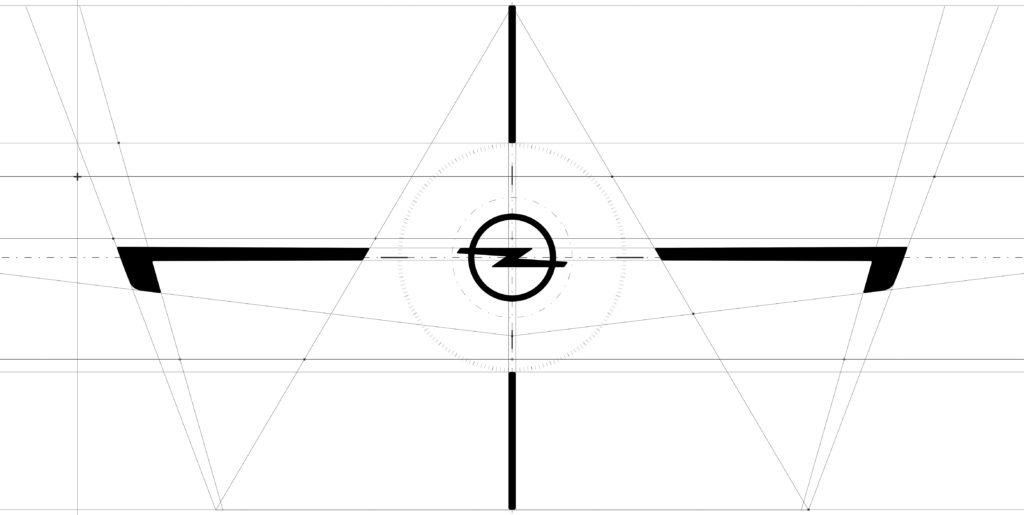
OPEL-KOMPASS
The central exterior design follows the Opel Compass where the vertical and horizontal axes – the sharp crease in the hood and the wing shaped graphic of the daylight running lamps – intersect with the Opel Blitz emblem in the middle. At the rear, the Opel Compass is repeated by the centrally mounted Blitz, the vertical central high-mounted stop light and the energy-saving LED tail lamps.
“A classic that will still look great in many years’ time.”
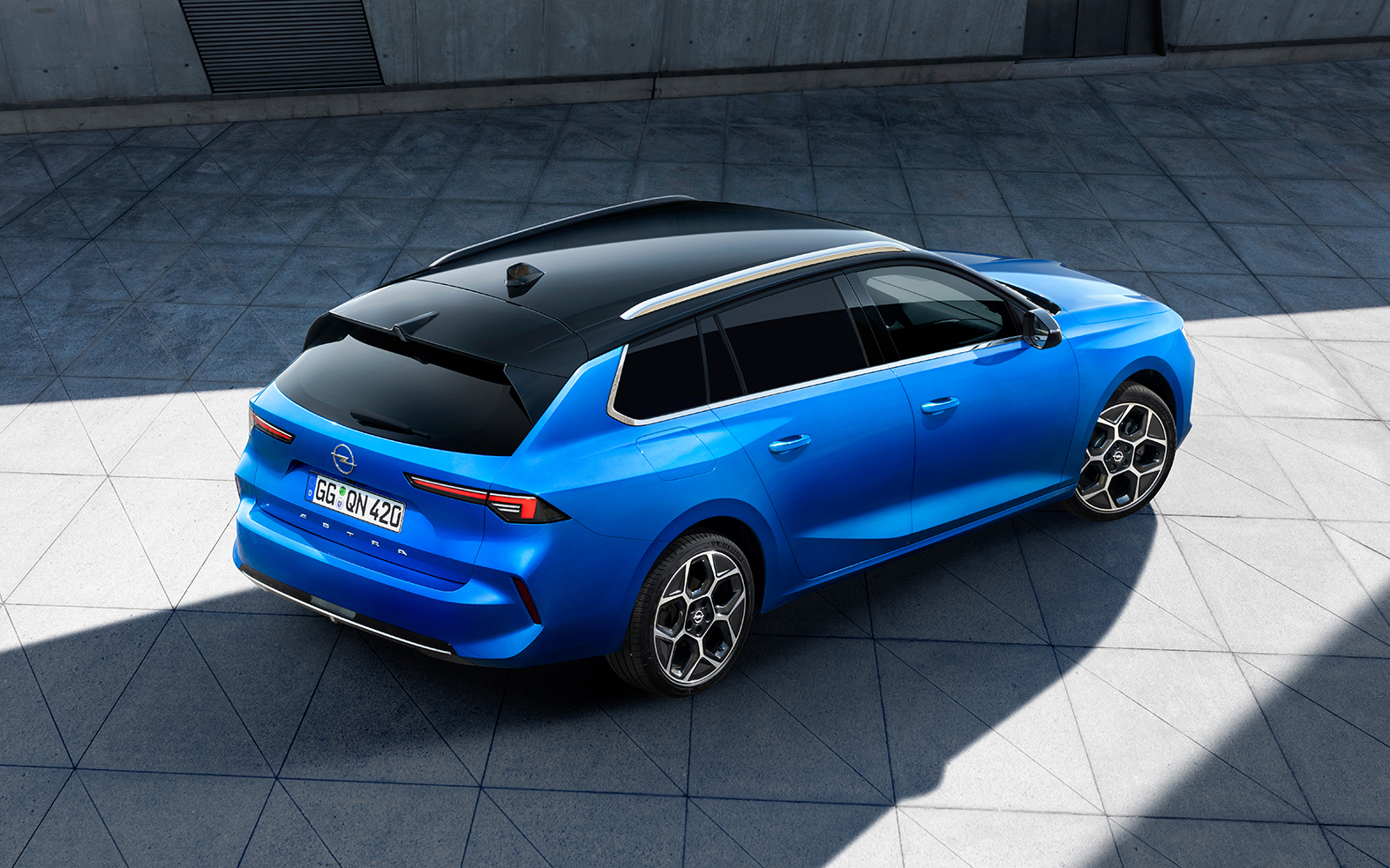
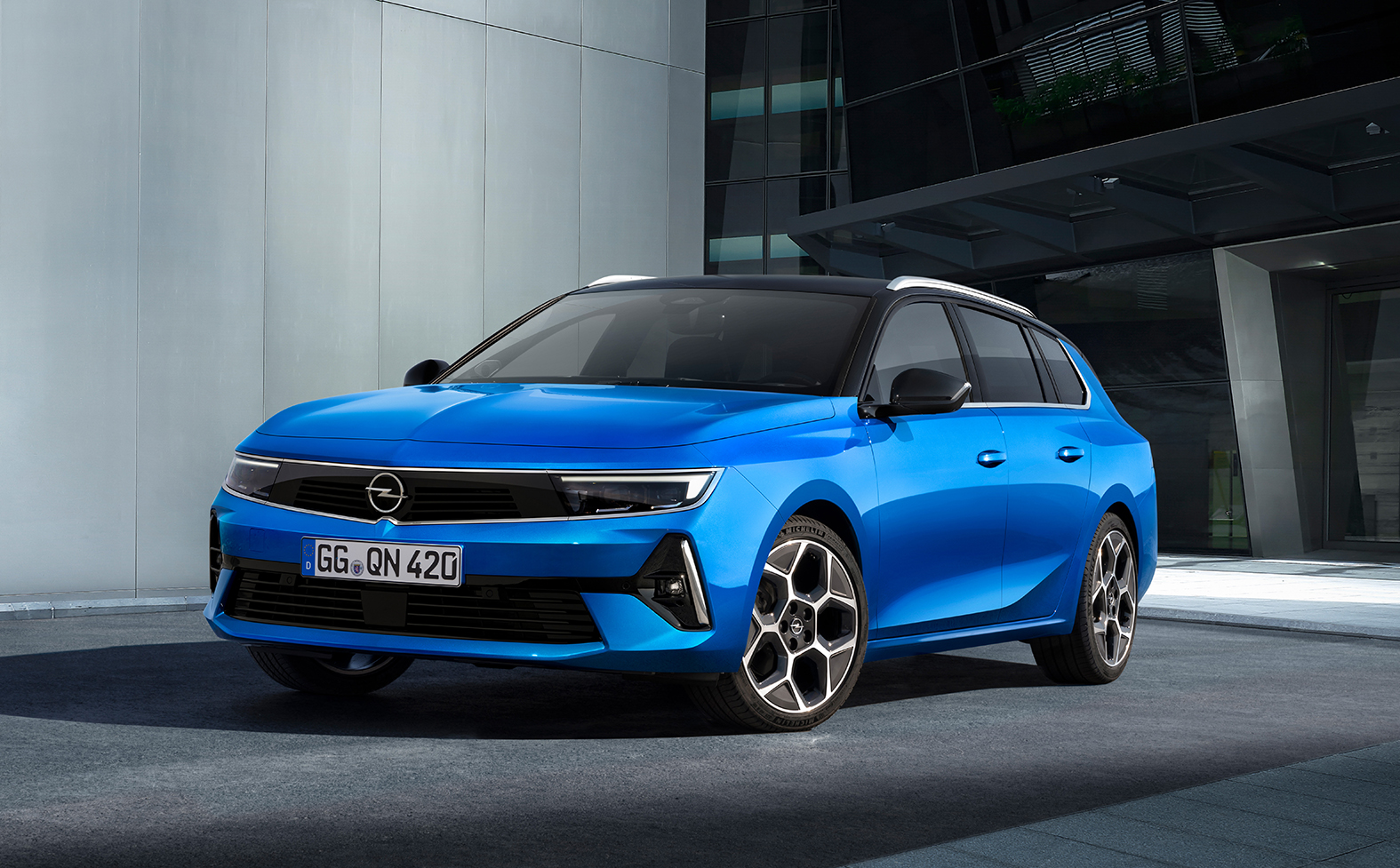
In what way?
We wanted to put a caravan on the road that is even more efficient. But not bigger. We owed that to the spirit of the times. No more bigger, wider, longer. We have achieved this: the Astra Sports Tourer is shorter than its predecessor. A whole six centimetres. At the same time, the wheelbase has grown by seven centimetres compared to the previous version, which naturally benefits passenger comfort. After all, the Astra Sports Tourer also marks a new era in terms of propulsion: It has been available as an electric plug-in hybrid since the start of sales – making it our first ever electrified estate. A battery-electric version will follow in the course of next year. The design is equally sustainable: it is timelessly beautiful. If we were fashion designers, the Astra Sports Tourer would be a perfectly fitting tailor-made suit. A classic that, far from trends and hypes, will still cut an excellent figure on the road many years from now.
What role does the interior actually play compared to the exterior?
Both have to be outstanding. The exterior design attracts customers, it entices them to get in. The final “want to have” feeling is provided by the interior. Inside, the decision to buy is made. Whether it’s high-quality materials, good workmanship, a pleasant feel and the best usability – interior design is very complex. That’s why we have had a team specialising in interior requirements for many years.
“The exterior design tempts you to get in, the interior is where the decision to buy is made.”
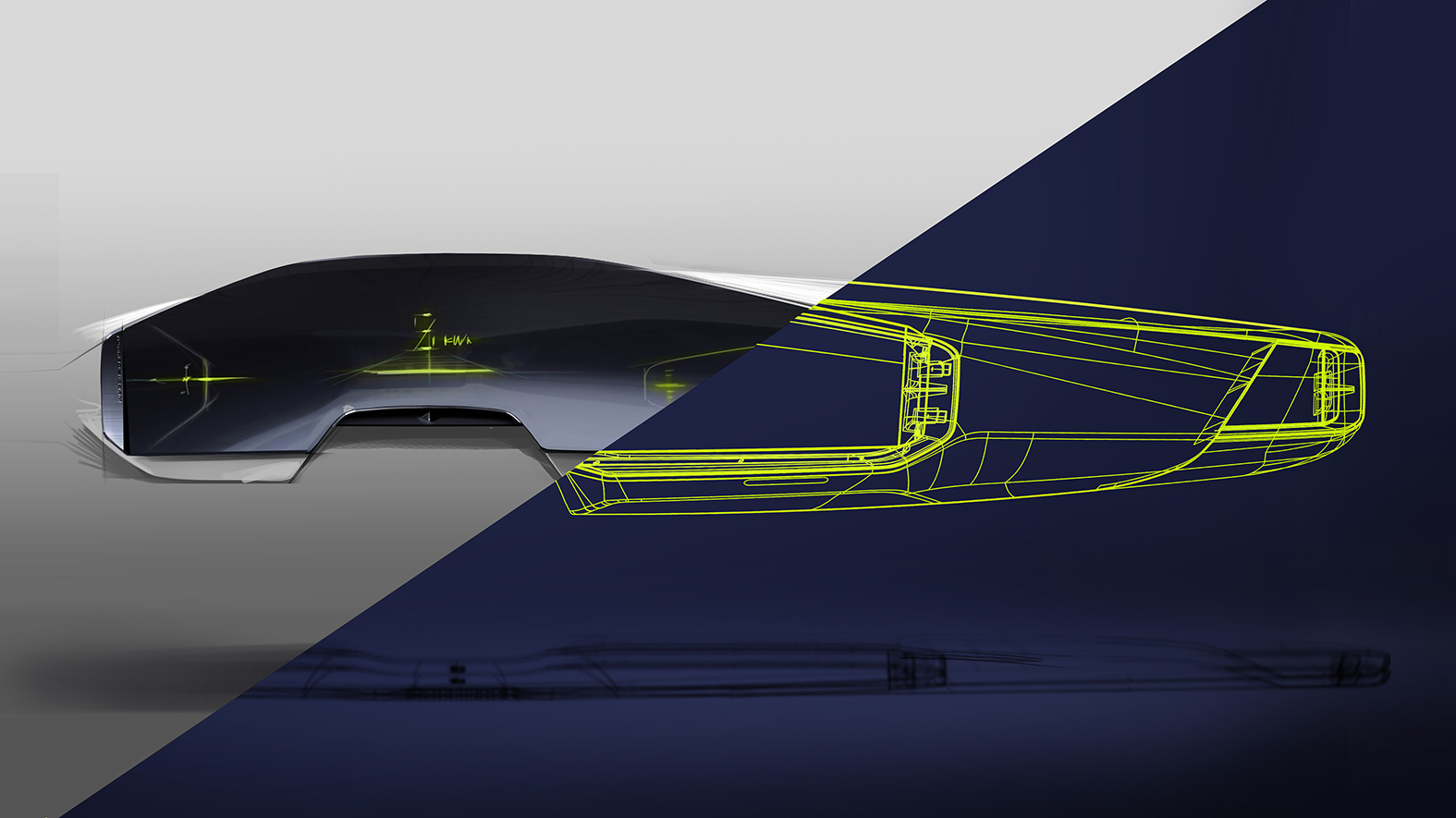
Thank you for this insight into the fascination of the design process. Could you actually imagine designing something other than cars?
No! Nothing comes close to the fascination and complexity of designing a vehicle. I wanted to start my career as an advertising designer in the 1980s, but I soon realised that 2D was not enough for me. I also need the spatial representation, the shaping with clay – today with the computer. Creating a car as part of a team with great people who give their best, without an “elbows-out” mentality, structured, goal-oriented and collegial – that’s what I love about my job. And for the moment when the finished car is on the road, when people stop, look and smile. Nothing else comes even close!
July 2022
